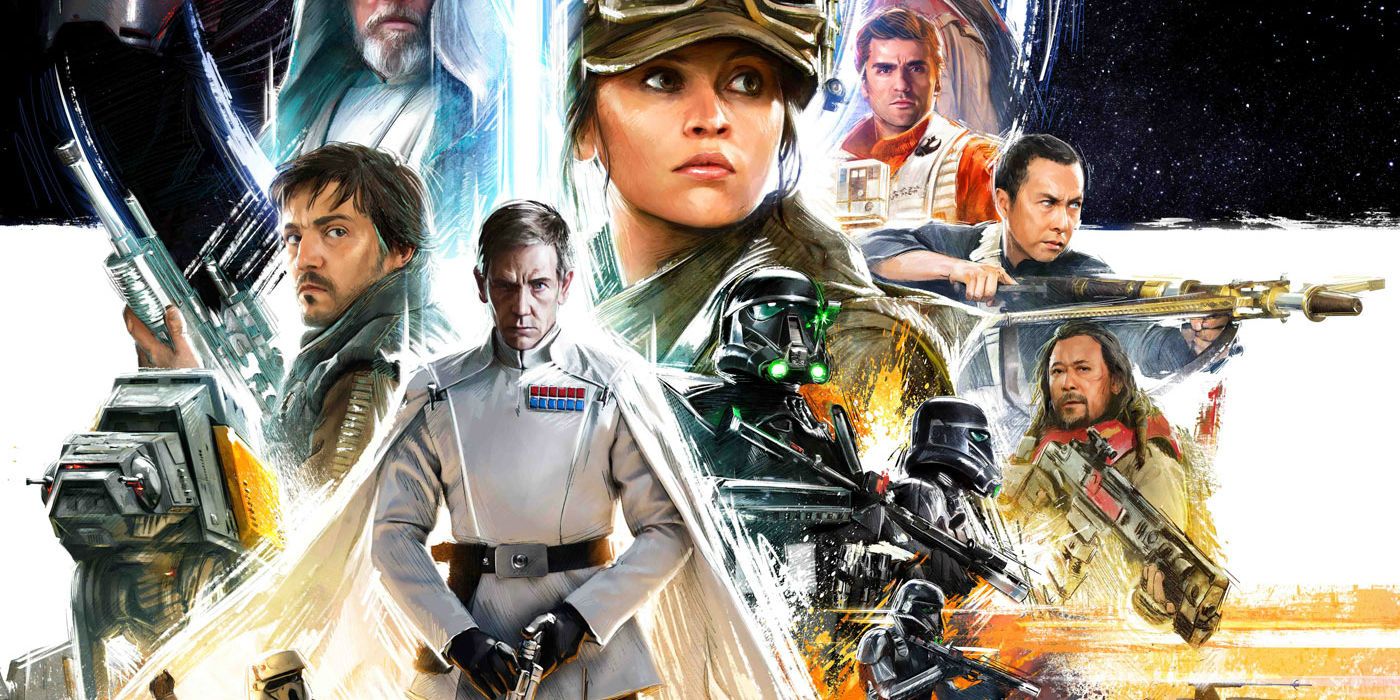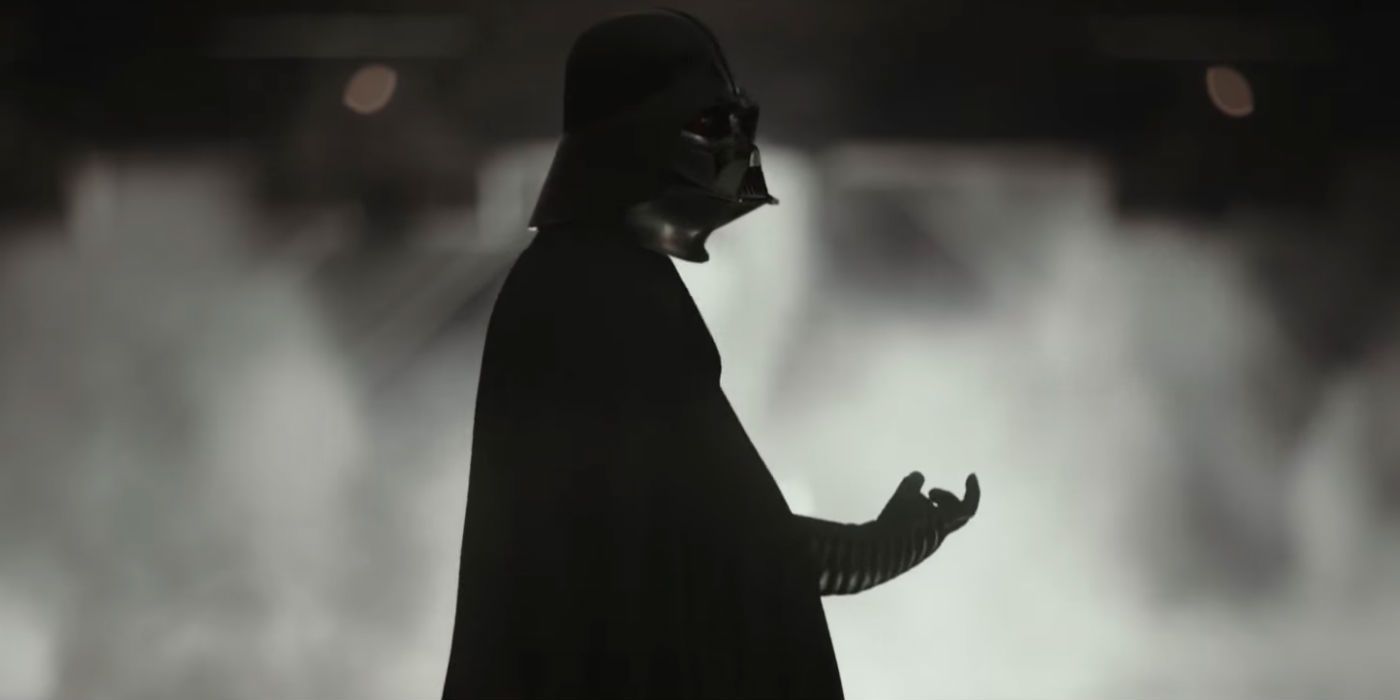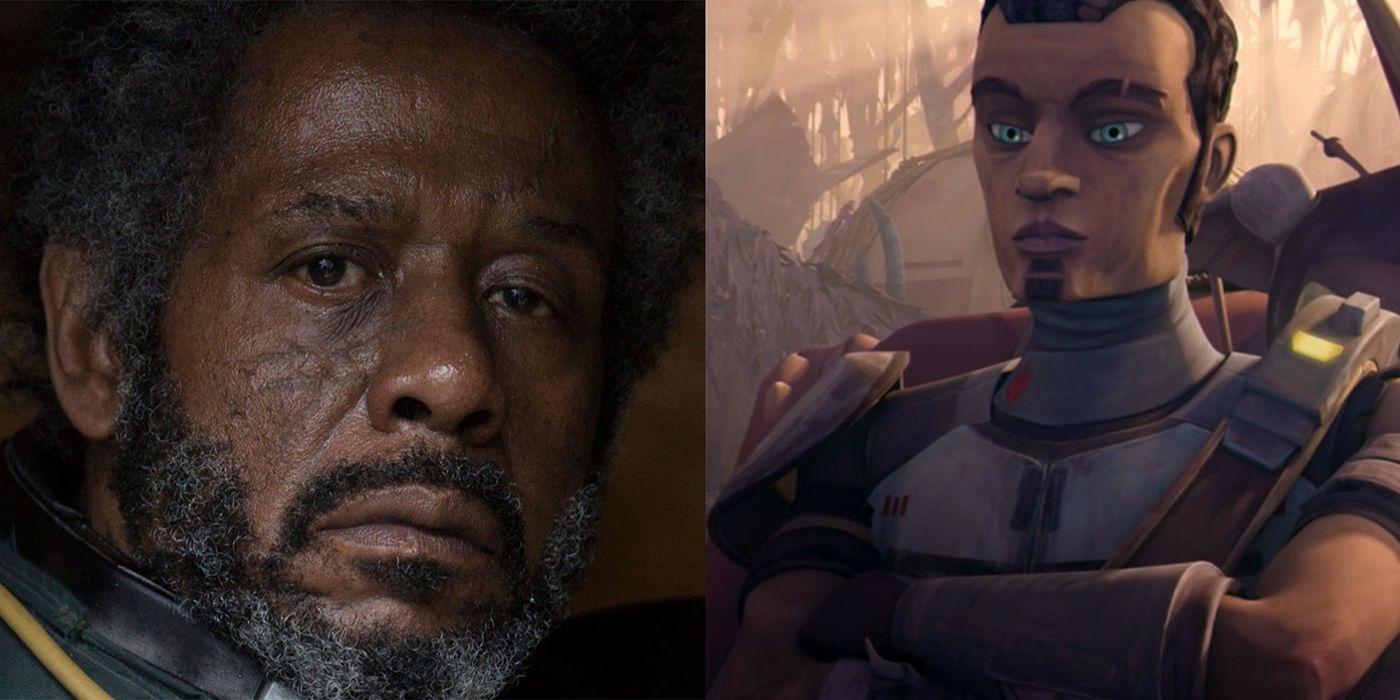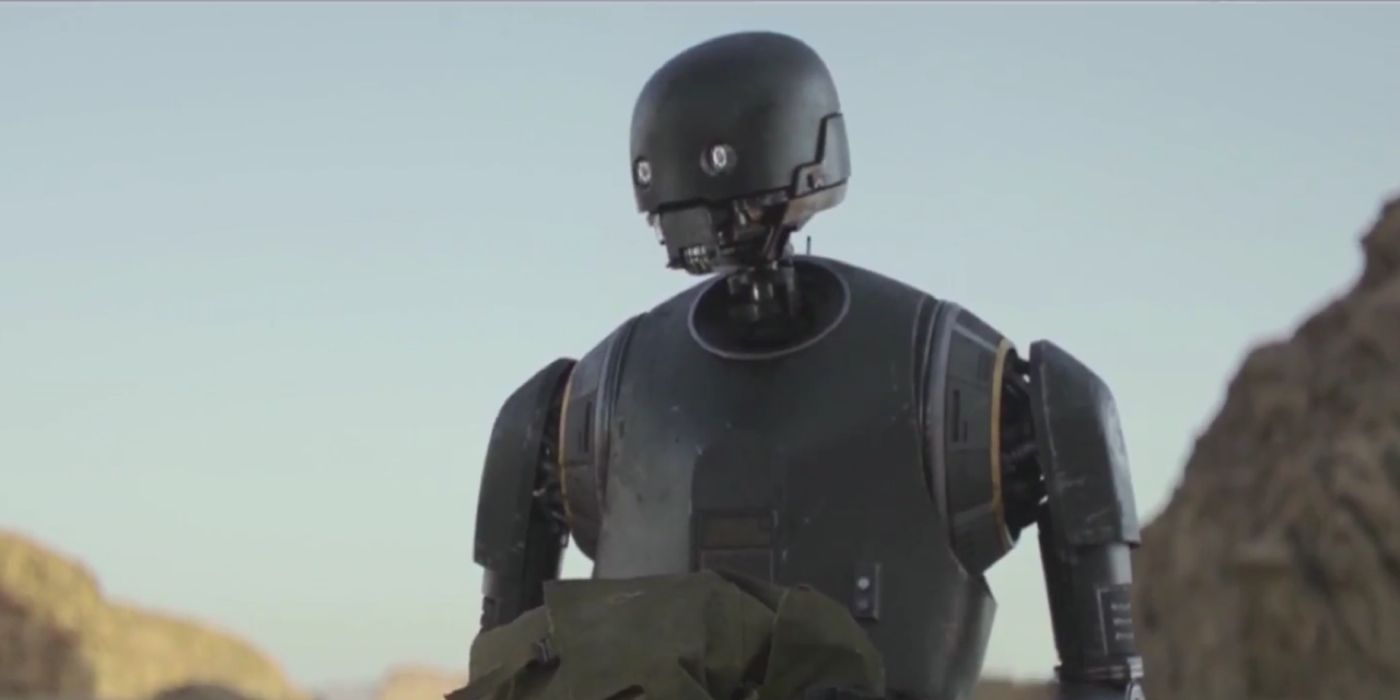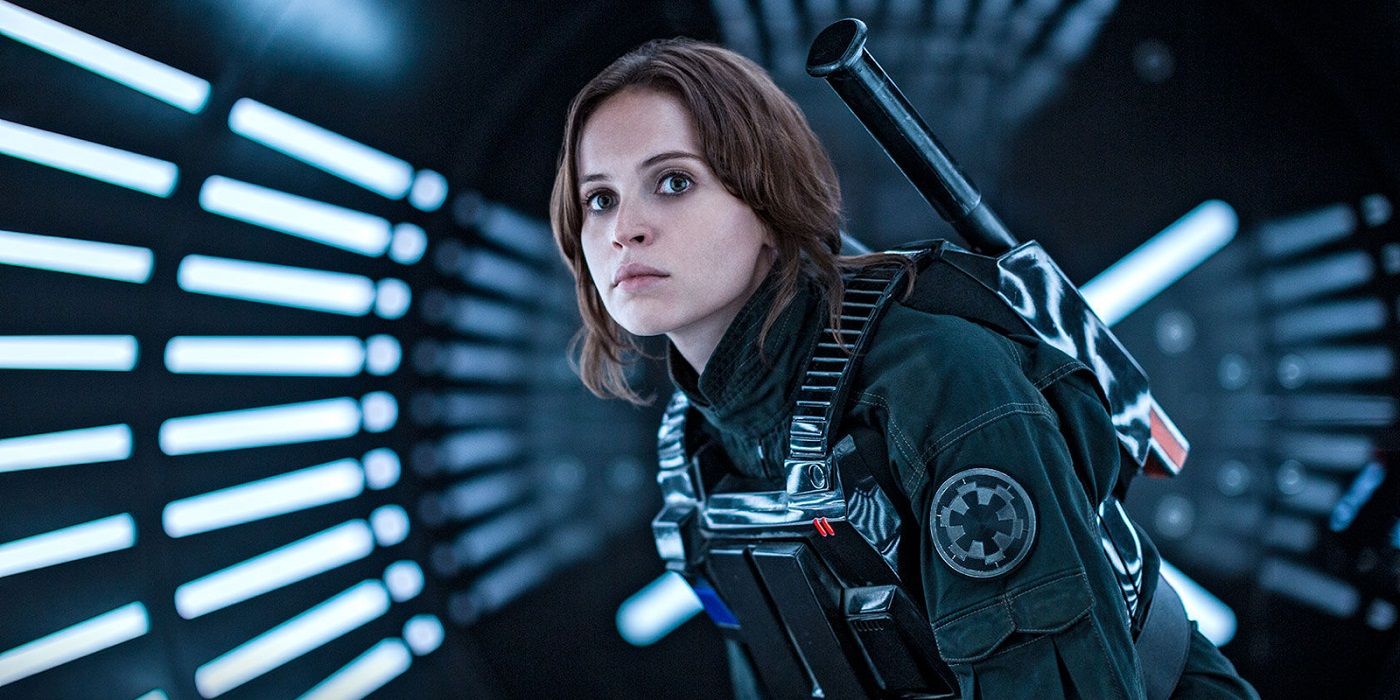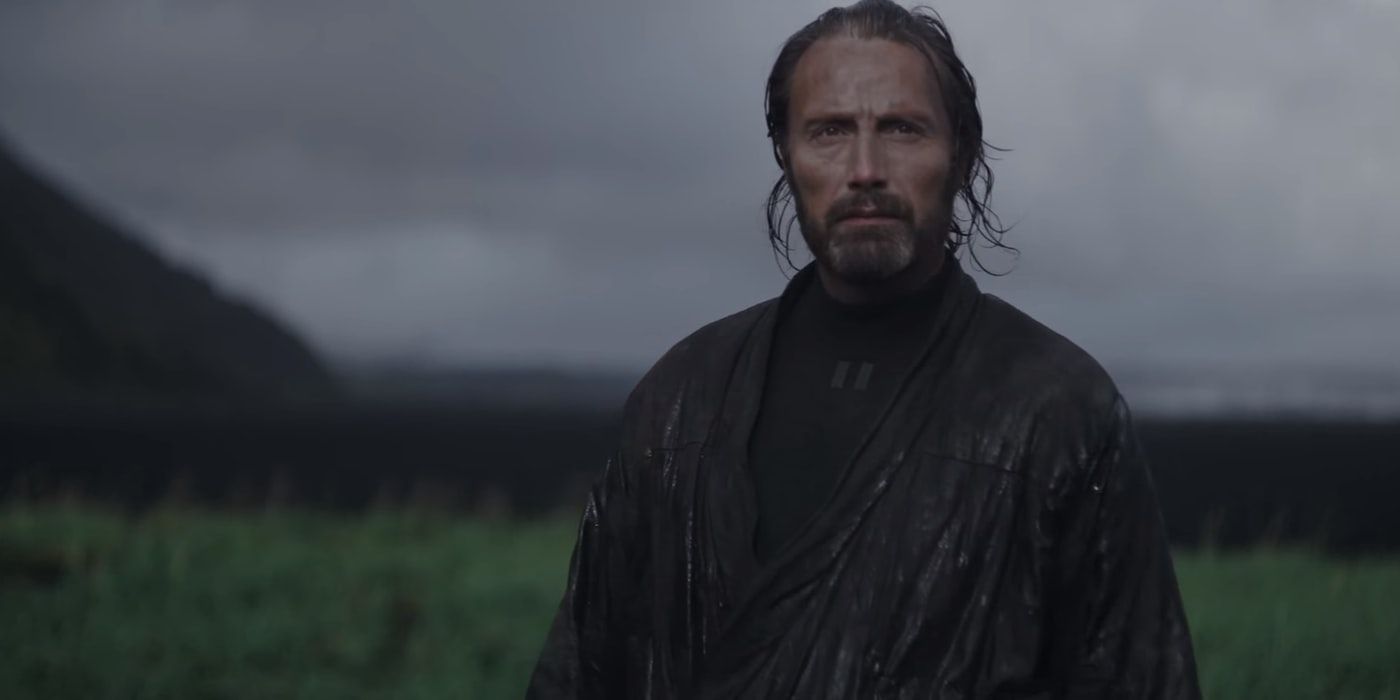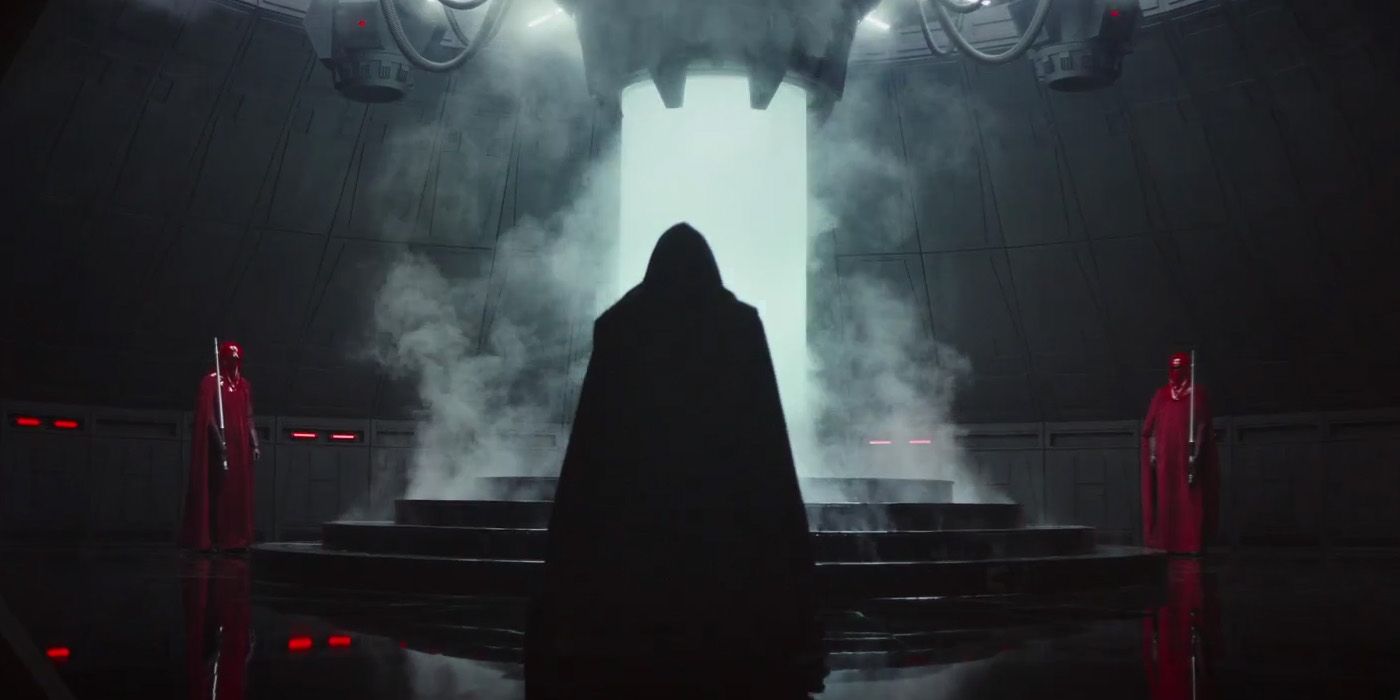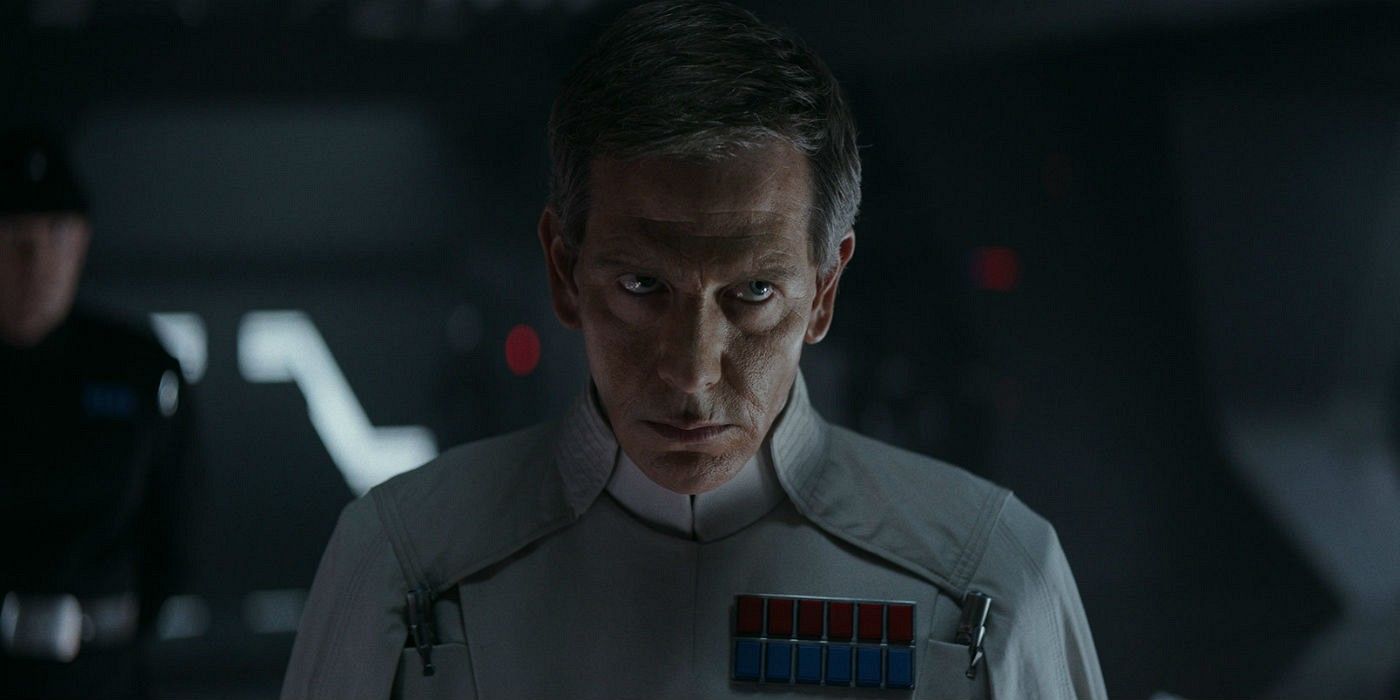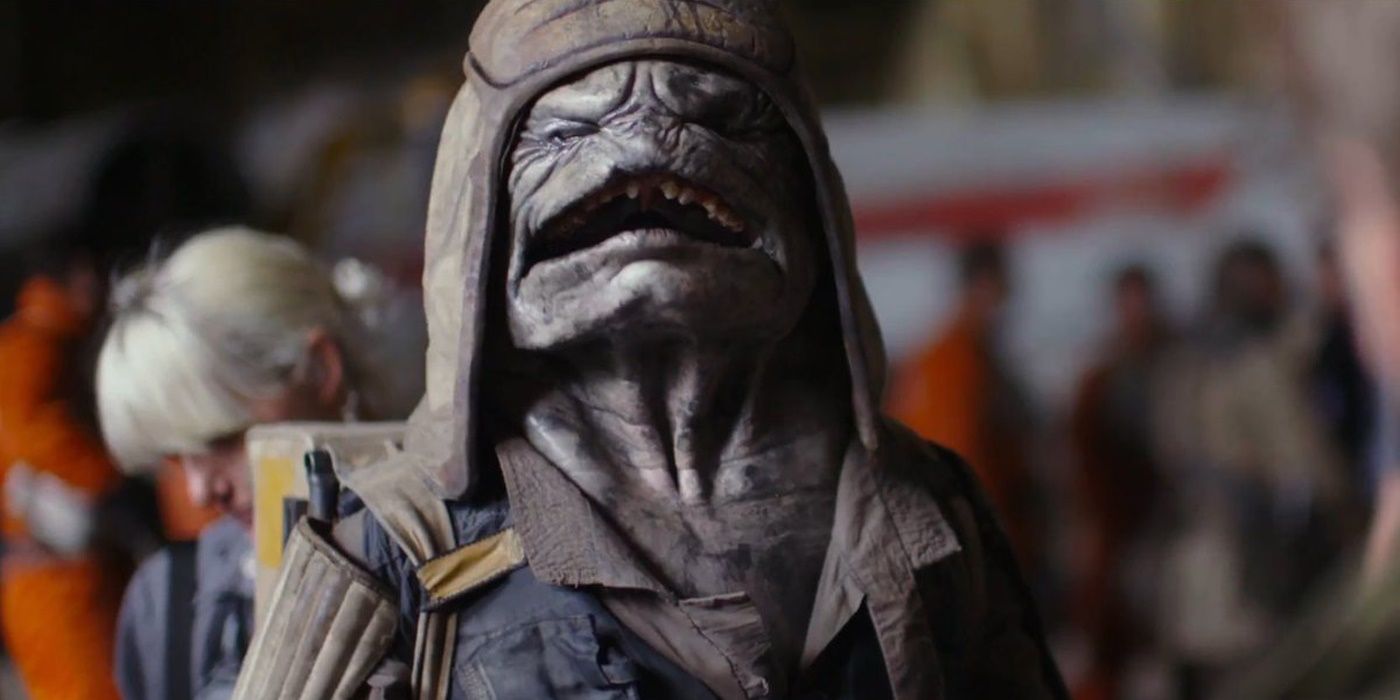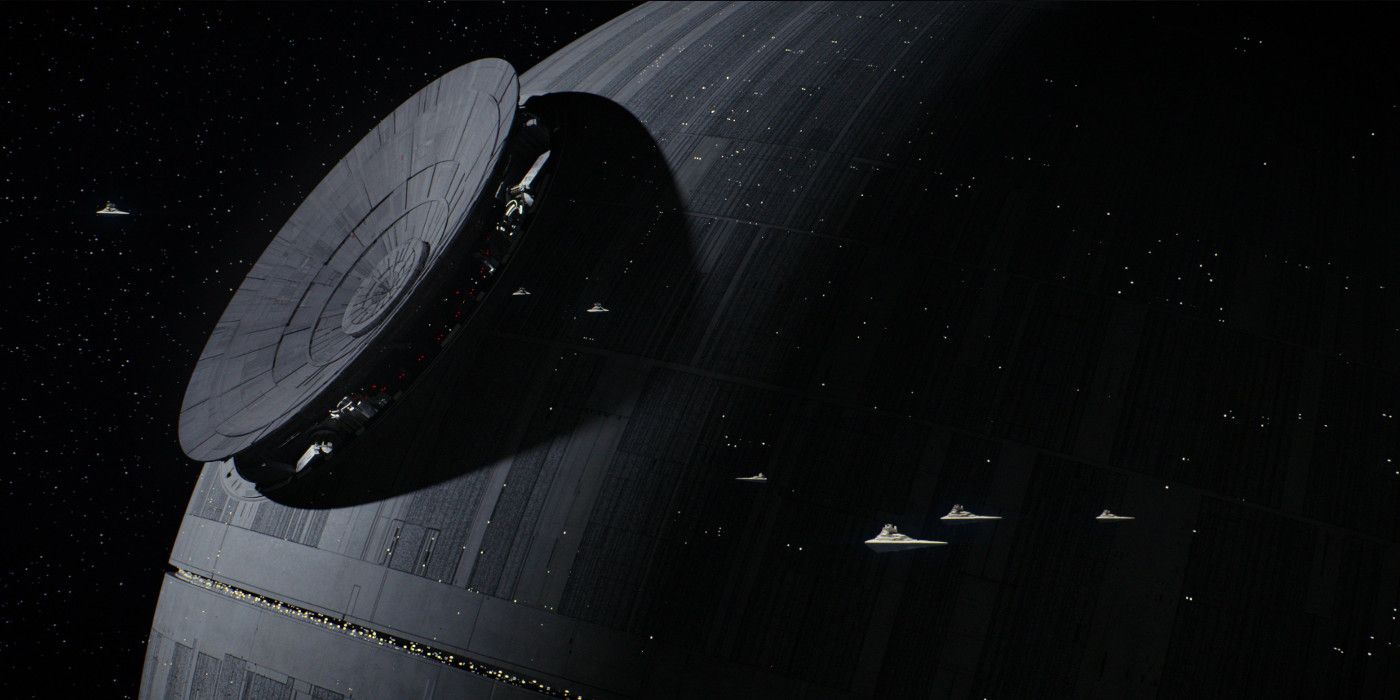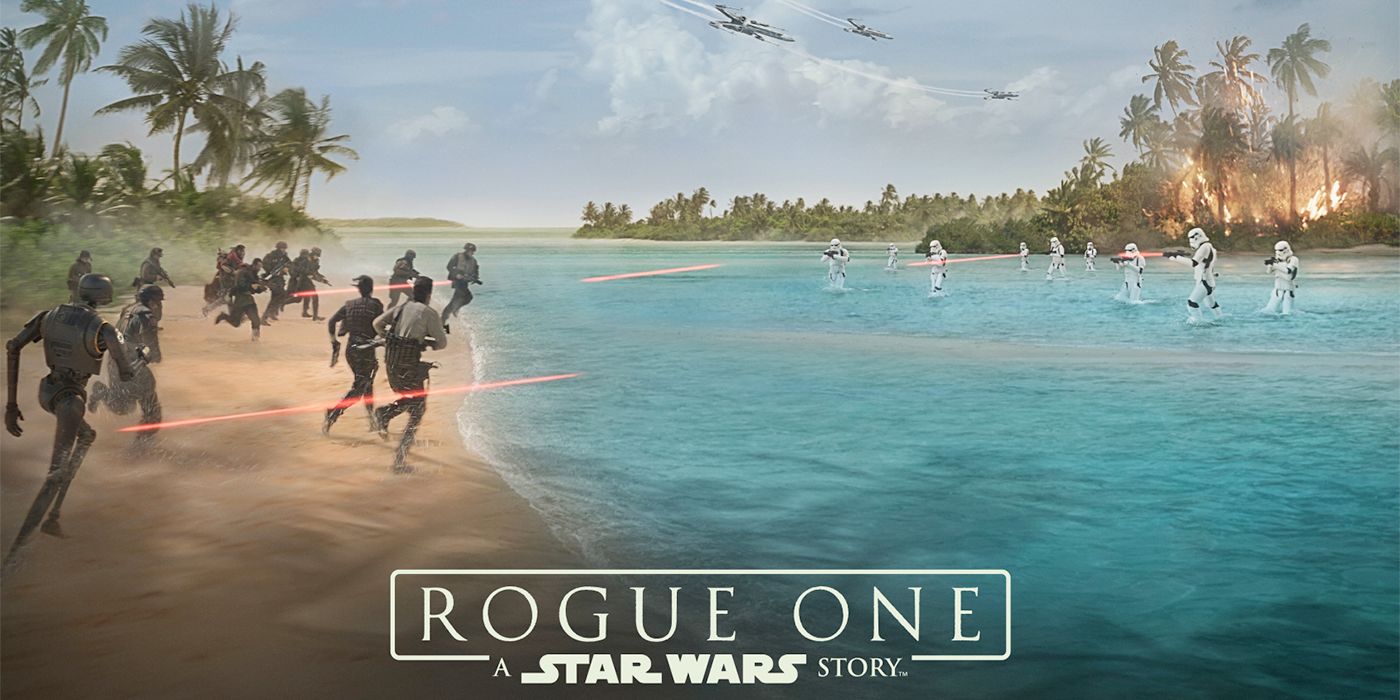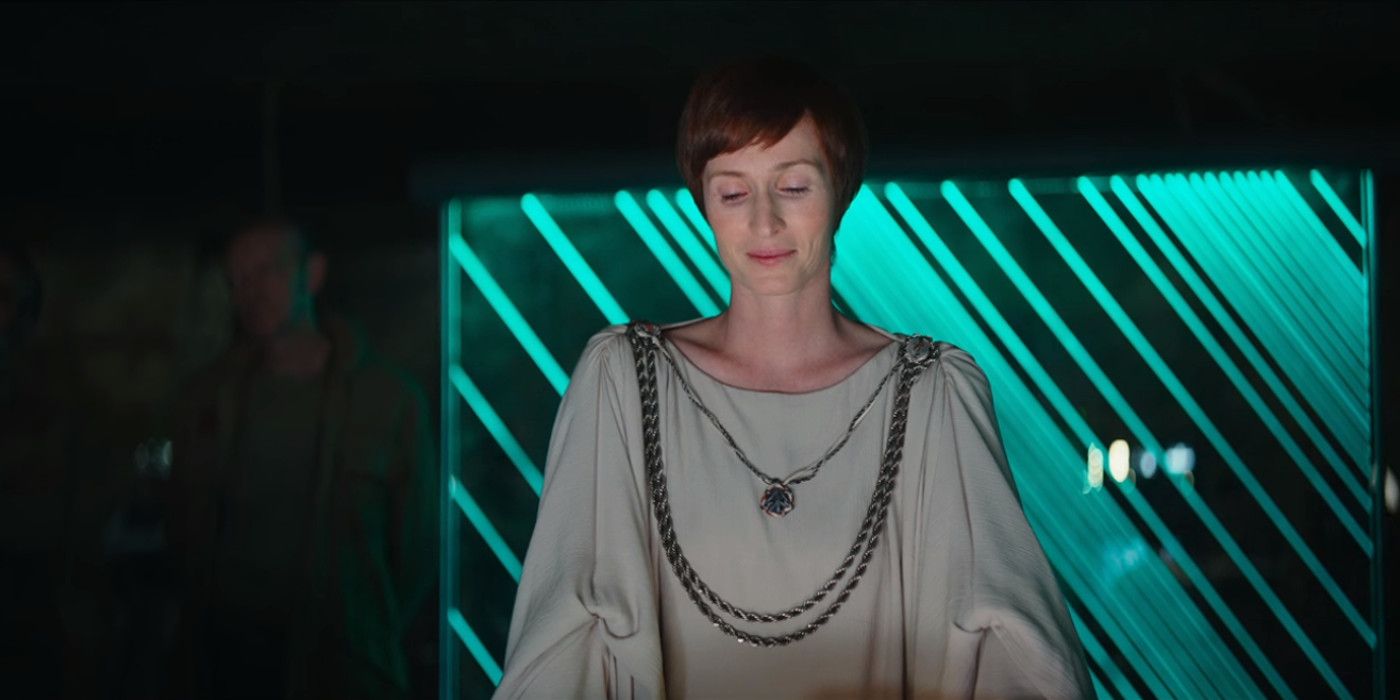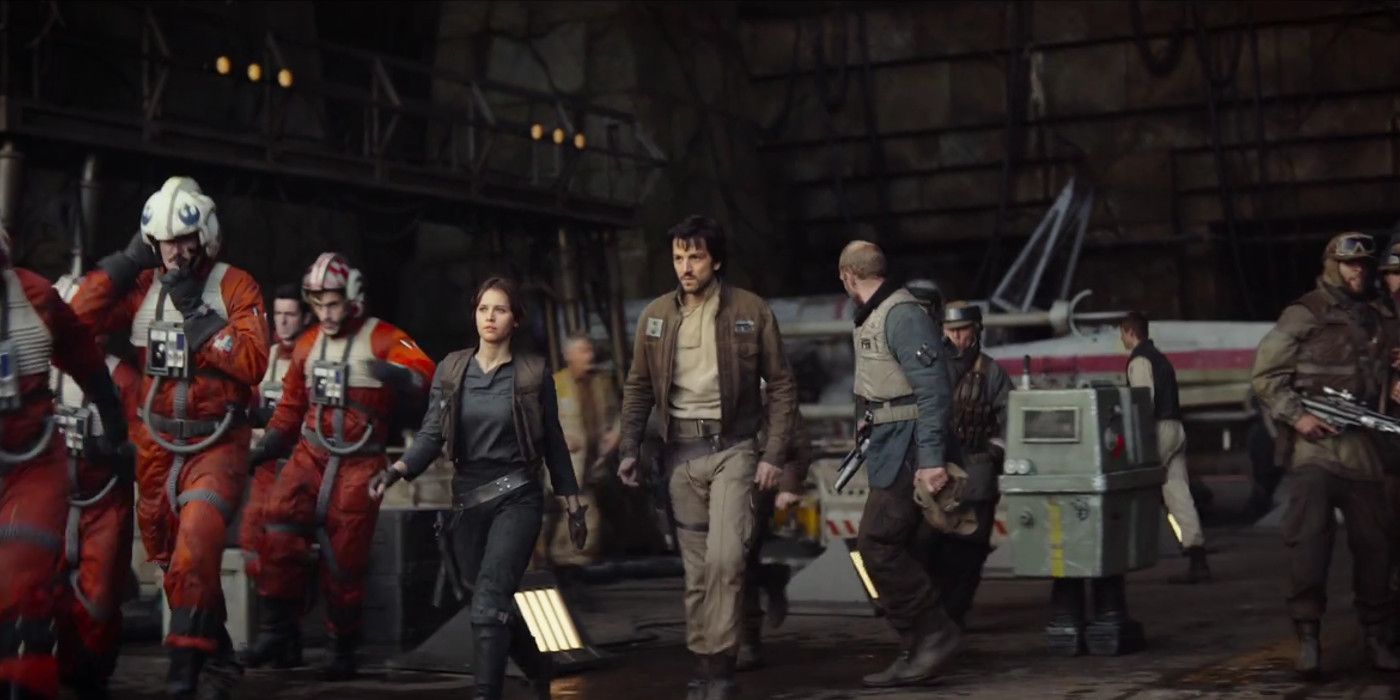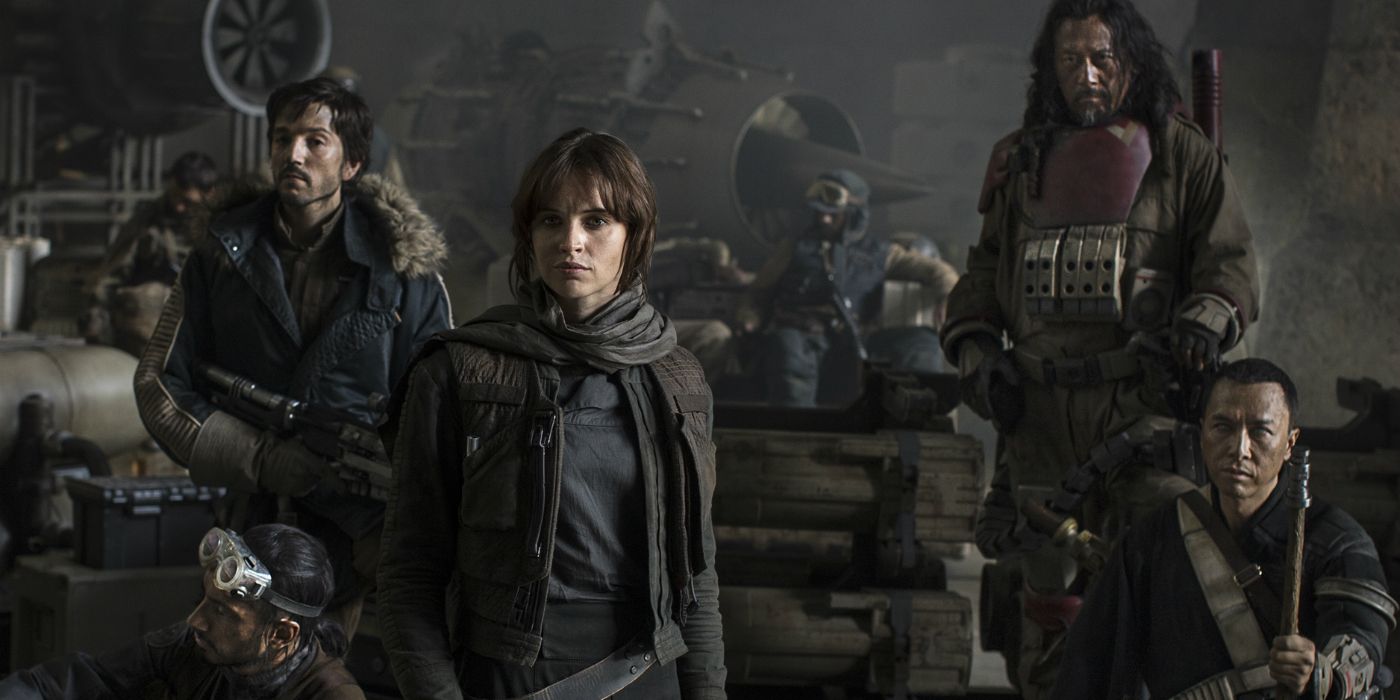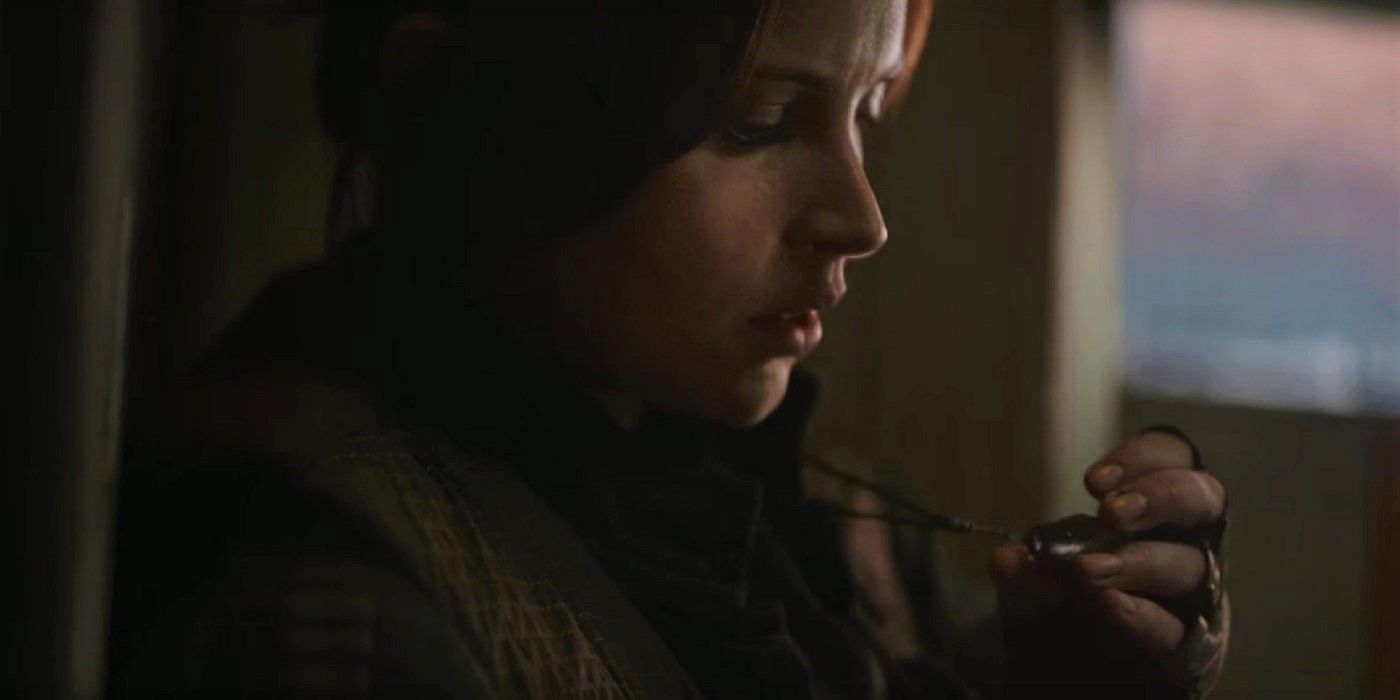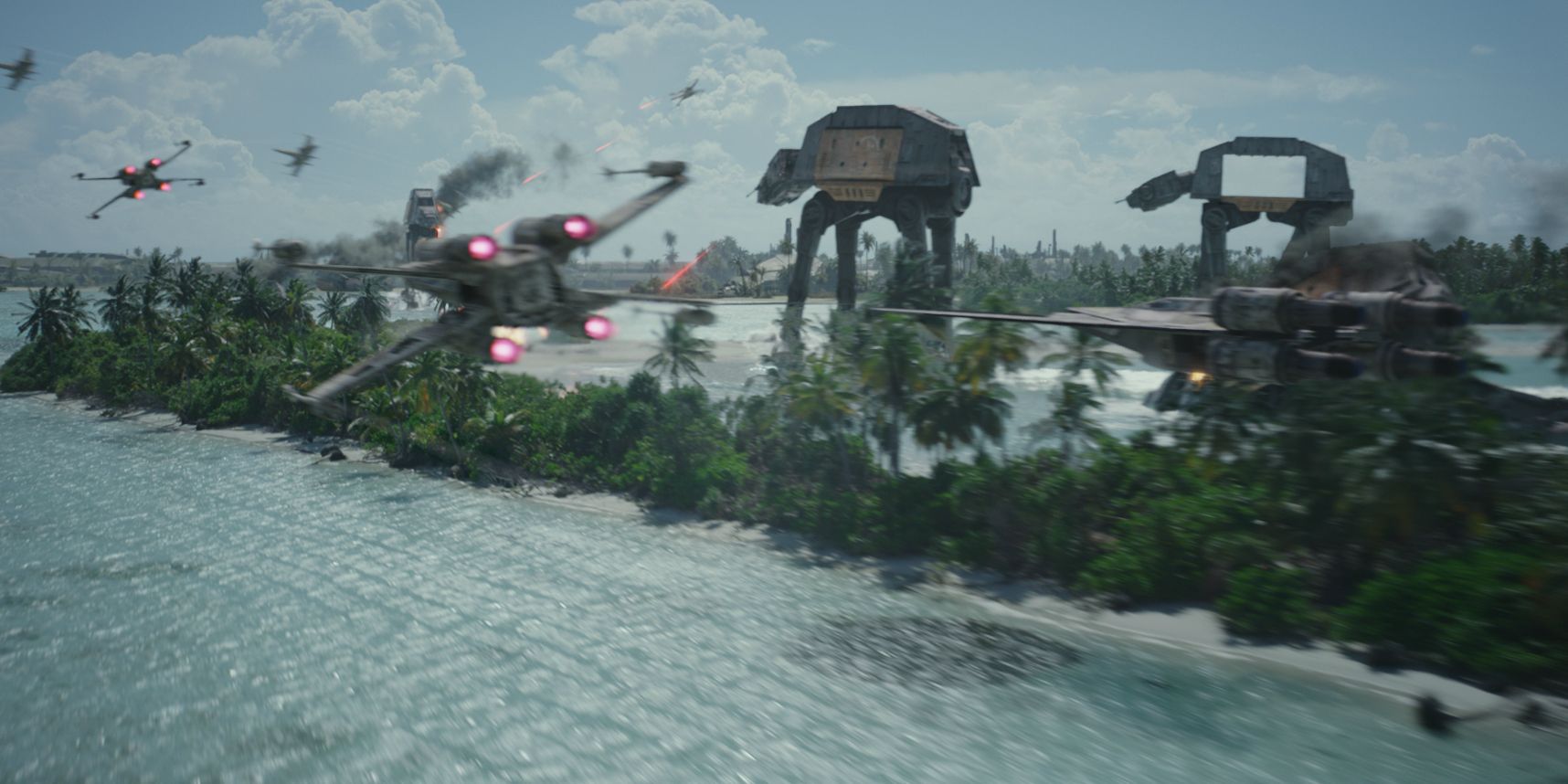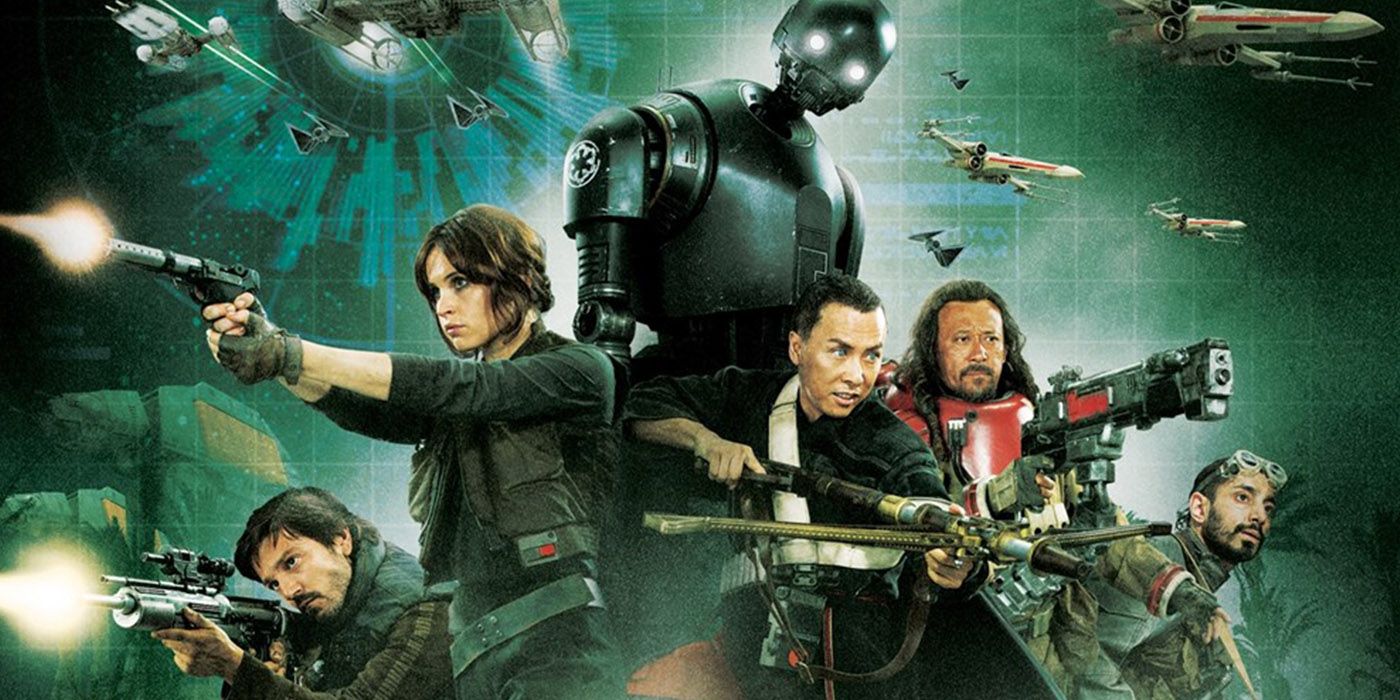SPOILER WARNING: Major spoilers ahead for Rogue One: A Star Wars Story
The question of whether or not a Star Wars property could survive outside of the main movies as a standalone film has been answered with "Rogue One: A Star Wars Story," and it's a resounding yes. It was never going to be an easy task for director Gareth Edwards to keep us wide-eyed and rooted in our seats as he reverse-engineered to where "A New Hope" started, but he pulled it off in style.
RELATED: Rogue One: The Star Wars Story's 15 Best Easter Eggs
It was a compelling and emotionally-charged ride that met fan expectations in abundance. Edwards' vision shined with the magic of the old trilogy while charting a course forward for modern audiences eager to see how the franchise would evolve once new movies added to the lore in the form of anthology stories like this and the upcoming Han Solo prequel. With the box office returns escalating, CBR dissected 16 things that made this film reawaken the box office!
16 Darth Vader Unleashed
If you wanted to see Darth Vader unrestrained, then "Rogue One" gave you your money's worth! The climax delivered the iconic villain like never before, as he boarded a Rebel ship to attain the stolen Death Star plans which kickstarted "A New Hope." What ensued was the Sith Lord toying with the Alliance members before unleashing his true power. In a dark passageway, Vader's signature breathing menacingly tortured the opposition before his red lightsaber illuminated a path to Force-chokes, Force-throws and lightsaber-deflected gunfire.
Vader slaughtered the dissidents as they scrambled for safety, sending chills down fans' spines and satisfying everyone who wanted him to be a major character, as opposed to supporting. James Earl Jones reprised his voice role, to help build the image of a vintage Vader on-screen, especially when it came to his speech mannerisms. Apart from this assault, we also saw Vader recovering in his bacta tank, reminding us how he fell from Jedi grace as the charred Anakin Skywalker. This merciless depiction of Vader went a long way to erasing memories of that cringeworthy "Noooo!" moment from "Revenge of the Sith" and punctuated what made him a true warlord.
15 Saw Gerrera's Tie-In
Saw Gerrera became the first Star Wars animated character to jump to the big screen, with Forest Whitaker delivering a performance that was short but very sweet. He debuted in "The Clone Wars" as a staunch opponent of the Empire, and here we met him leading the Partisans, an extremist faction of the Rebel Alliance, on Jedha. He was also revealed as Jyn Erso's mentor, having rescued her as a child when her father, Galen, was abducted by the Empire to continue building the Death Star.
What made Saw stand out was how he was tagged as a wildcard by the Rebels themselves, even taking extreme measures by abandoning Jyn because he felt it was better for her safety. Whitaker's labored voice, his breathing apparatus and having no legs truly gave the impression of a seasoned war veteran who was battered and bruised from his constant duel with the Empire, which saw his sister, Steela, die in the cartoon. His importance in helping direct Jyn to her father and remaining on Jedha as it was destroyed by the Death Star showed how animated characters could be tied into the film despite LucasFilm being tentative about this pattern.
14 K-2S0's Importance
In the Star Wars mythos, the main robots have either been there for the cute factor, as with BB-8, or for comic relief, as with C-3PO. In R2-D2's unconventional case, he was a mix of both, as well as a sidekick who served as Anakin and Luke's co-pilots, and travelling data storage for Princess Leia. K-2S0, however, wasn't just there for humor, but also to act as a true warrior. Voiced by Alan Tudyk, he was an Imperial security droid re-programmed by the Rebels to work with Captain Cassian Andor (played by Diego Luna) in destabilizing the Empire, even if it meant killing Galen.
K-2S0 charmed the audience with his cynical barbs and paranoia towards Jyn, antagonizing her throughout the film. However, during the climactic battle on Scarif, he showed just how much of a scrapper he was, shielding Jyn and Cassian as they stole the plans to the Death Star. He engaged in a cavalier laser shootout with Stormtroopers, a fight that even saw him literally tossing a few troopers around for good measure. His eventual self-sacrifice would end up being essential to the team's success, making him a key component in saving the Rebellion and the dream of galactic liberation.
13 Undercover Rebels
When the heroes raided Scarif, seeing Jyn and Cassian impersonate members of the Empire made us flash back to the 1977 debut Star Wars movie, which had Luke and Han Solo pretending to be Stormtroopers in order to rescue Princess Leia aboard the Death Star from the clutches of the Empire. One of the keys to this updated ruse was Bodhi, a cargo pilot who defected from the Empire, entrusted with Galen's critical information for the Rebels, as he helped the Scarif deception unbeknownst to their enemies by transmitting false intel. This allowed the duo, in tandem with K-2S0, to dupe the Stormtroopers and the power-hungry military director, Orson Krennic, en route to stealing the information needed to destroy the planet killer.
Jyn and Cassian had a greater sense of urgency to their mission and going undercover bought them valuable time as the Empire was left scrambling to locate the infiltrators. The race was on to deliver the goods with little time to spare as the diversion attacks from Cassian's entire strike team yielded an action-packed, high-stakes hijacking that helped define Vader's phrase, "Rebel spies."
12 Galen Erso: Double Agent
Fans were assured of an emotional rollercoaster when Mads Mikkelsen's Galen Erso, chief architect and engineer of the Death Star, was revealed as Jyn's father, hostage of the Empire and also, a Rebel sympathizer. He added deep layers of drama to his character, playing off the themes of fatherhood ever-present in Star Wars, while setting off the chain of events that would eventually drive the plot of "A New Hope."
After losing his family, Galen reluctantly rejoined the Death Star project because his genius was needed to fast-track its construction. Galen knew that with or without him, the weapon would eventually come to fruition, so he went for the galaxy's sake, working as the perfect double agent. Unsuspected and undetected, he capitalized on his past working relationship with Krennic, harnessing a professional trust, while secretly building that infamous design flaw in the ghastly weapon's reactor. Some would ask why he didn't simply send the plans with Bodhi, but as we saw, attaining and transferring these engineering details was a very complex procedure. Galen's plan was so well-kept that he ended up incurring the wrath of the Rebels, which sadly cost him his life at their very hands.
11 Another Epic Score
It must have been intimidating enough as it is to be the first composer outside of John Williams to write a score for a Star Wars movie. Being asked to do it with just about a month to deliver is even more daunting, but Michael Giacchino proved up to the task by orchestrating a musical masterpiece that's right up there with any of its predecessors. From the scenes that detailed the movie's core characters to the battlefields of Jedha and Scarif, his tonal approach was that of a war movie, aligned to Giacchino's past work on video games such as "Call of Duty" and "Medal of Honor."
He did manage to pay homage to the old lore, especially when it came to the mystique of the Empire, but with Edwards' new characters and settings, Giacchino's vast array of horns, strings and slow builds packed a freshly dramatic feel, resonating like a new masterpiece. His diverse style's been seen with the "Star Trek" reboot, "The Incredibles," and "Doctor Strange," and while placing his own stamp on this film's score, he didn't veer too far away from the movie's essence as a space opera. He instilled a dynamic sense of realism via a score that felt distinctly different but still very immersive.
10 The Fallible Krennic
Trying to keep "Rogue One" as Force-free as possible was always going to be tough once Vader was announced, but in a mythology that's hinged on the esoteric balance between Jedi and Sith, it was nice to see a flawed, human villain with simple goal: ambition and career advancement. Orson Krennic, Director of Advanced Weapons Research for the Imperial Military, didn't have the clout of Grand Moff Tarkin and often came off like a petulant child, but his hunger to be praised for creating the Death Star was admirable.
He wasn't overpowered or entwined in galactic politics; wisely done to ensure that Vader and Palpatine remained the big kahunas in charge. Krennic was a self-made-man kind of villain, even willing to blackmail Galen and murder in front of him into to get Galen to fall in line. Mostly, he was your typical power-thirsty villain, aptly disciplined by Vader in another nostalgic crowd-pleasing moment. At other times, he was cutthroat, typified by when he executed Galen's wife and engineering team. Krennic offered a duality that moved from being a very focused megalomaniac to a bumbling pawn: which even evoked shreds of sympathy when he saw his own creation bring a fiery, karmic hammer down upon him on Scarif.
9 The Practical Effects We Deserved
In "The Force Awakens," J.J. Abrams placed emphasis once more on practical special effects as opposed to going overboard on CGI; something that plagued George Lucas' prequels. In "Rogue One," Edwards followed suit by creating a visual aesthetic that was rough, rugged and believable, as opposed to what "The Phantom Menace" outlaid with the Gungans, or "Attack of the Clones" with the clone factory on Kamino.
Edwards kept it gritty and less polished, as seen with the creatures on Jedha, which replicated the Mos Eisley-vibe that "A New Hope" introduced us to. The Alliance's Admiral Raddus, as well as a plethora of creatures in Rebellion's arsenal, were also non-CGI characters, throwing us back to when fans first glimpsed Lucas' Admiral Ackbar or the aliens in the infamous Cantina sequence. Edwards cleverly imitated this, balancing his practical effects with the necessary CGI touch-ups, to the point that whether it was off-planet in an epic spaceship or on-planet fighting the Empire, the film always felt raw, real and kept you in the same aura of what the initial trilogy offered.
8 The Majestic Death Star
The Death Star may well be cinema's most revered and fan-favorite weapon when it comes to galactic genocide. Its awe was immediately registered when it destroyed Alderaan, making it no surprise the Empire brought it back for "Return of the Jedi." While Lucas' earlier movies used it to annihilate planets, this film dialed things back, teasing it as a weapon of mass destruction, rather than fully showcasing its true range and potential.
Instead, Edwards focused on the super-weapon's subtlety, with Tarkin commandeering it ahead of Krennic so that it made "a statement, not a manifesto." This method of deployment, via single-reactor ignition, was done to keep it off the Senate's radar as well as to ensure it remained hidden from the Alliance. In this film, it was all about seeing how the Death Star's gaze affected its targets internally. From the gravitational disarray that resulted on Jedha to the slow-burning, white-hot destruction on the shores of Scarif, the weapon was used to show the beautiful chaos that would ensue when you were on the receiving end of things but also, in such a way that the full majesty of the Death Star would be preserved for "A New Hope."
7 They Put The 'War' In Star Wars
From sneaking around, planting bombs, and laying in wait to ambush their enemies to making a gung-ho run into the face of death while being shot out from troopers and hulking machines alike, the Rebels laid it all on the line akin to films such as "Saving Private Ryan," "Zero Dark Thirty," "The Green Zone" and "Black Hawk Down." From the war-zone of Jedha to the raid on the Imperial Eadu Base to the finale's epic space battle, this film was ingrained with a deeper sense of what it's like to be on a battlefield than any other "Star Wars" film has done before. The final mission on Scarif, however, was the truest testament to the atmosphere of war with which the Empire laid siege across the galaxy.
The entire aesthetic of this sequence felt like watching action on Juno Beach, with its realism and intensity spiced with a galactic flavor. Edwards' artistry and craftsmanship gave off a World War II invasion vibe that felt like a galactic D-Day as we saw the Rebels in the sand and sea taking on AT-ATS and Stormtroopers. The director chose wisely when it came to the setting, as it gave off a strong Juno Beach parallel.
6 Perfect Cameos
Usually, movies have cameos to offer some sort of nod to the fans, as seen with the Stan Lee pop-ups in Marvel properties, but in this case, Edwards placed an important series of cameos to act as the connective bridge between this heist job and "A New Hope." The cameos the director littered here definitely added a lot more value to both films as they showed just why certain individuals were highly relevant to the events that subsequently led to Vader's attack on the Rebels once the Scarif fiasco ended.
Senator Bail Organa and the person he trusts the most in adopted daughter, Leia, were at the forefront of the cameos, not just because they acquired the Death Star's plans, but also because of their link to the reclusive Jedi, Obi-Wan Kenobi. A CGI Tarkin was also well-received as we saw him exerting control over the Death Star. Mon Mothma's appearance showed the fragile but resilient nature of the Rebels while Ponda Baba and Doctor Cornelius Evazan's brought nostalgic joy. Fans also erupted when C-3P0 and R2-D2 made their quirky cameo, confirming that it wasn't all about business and that Edwards did indeed have an affinity for lighthearted blasts from the past.
5 Jyn The Badass
After being rescued and mentored by Saw, it came as no surprise to see a battle-hardened Jyn kicking major butt on Jedha. Her prowess with laser blasters, batons and in hand-to-hand combat saw her transition from street fighter to true Rebel on the run, in a straightforward story which saw her using her militant background to try to redeem her father's name and end the Empire's oppression.
Her tactical acumen wasn't the only thing that made her a badass, as she also reminded a ragtag band of strangers, along with the Alliance, that "rebellions are built on hope," painting her as an inspirational leader, especially in rallying the attack on Scarif. What built her appeal was that she was a truly human soldier, as seen in her constant struggles to relay data to the Rebels. Her story was comprehensive yet compact, driven by her wiles and relentless nature, and unaided by the Mary Sue effect of the Force that some fans argued was present in Rey's evolution during "The Force Awakens." Jyn 's character was less mysterious, well-differentiated and still emphasized that a strong female character is always a key ingredient at the heart of any Star Wars story.
4 The Suicide Squad of a Galaxy Far, Far Away
From the onset, it was obvious that this story would be a suicide mission. The team knew what was at stake and went about it in the most cavalier fashion. From the determined, and at times underestimated, figure of Jyn to the gunslinger, Cassian, to the battle-ready, K-2S0, every member felt very different, yet very important to the task at hand.
Baze Malbus, with his heavy laser blaster, Chirrut Imwe, a blind Force-sensitive martial artist, as well as the nervous but earnest technician/defector, Bodhi, all earned their places in our hearts because of how they, as pieces of a much bigger puzzle, all ended up fitting together, while playing their roles so well. The diverse casting, chemistry and the versatility in their performances further groomed them as an underdog strike force that we loved rooting root for and, overall, as crucial cogs in a well-oil machined facing up to insurmountable odds. In the face of death, they lived up to the David versus Goliath hype, fully knowing the sacrifice they'd be making. Fans will surely be clutching their kyber-crystal chains like Jyn did with the one Galen gave her, hoping Disney finds a way to bring back one or two rogues.
3 The Themes of Family & Love
These are the pillars on which everything "Star Wars" stands. We saw it with the Skywalkers, the Solos, the Organas and now, the Ersos. Jyn's motivations grew from what her parents wanted: a secure galaxy based on peace and not terror. Her father's love for her and Jyn's overall sense of family permeated into her rogue squadron, reiterated by Baze calling her "little sister" in their final moments together. The former also grew in faith due to his brotherhood with Chirrut while the doctrine of love seemed to shine the most with Cassian shifting, the closer he grew to Jyn, from a mode of ruthlessness to one of empathy and deep trust.
These precepts applied to all freedom fighters, as Saw looked at Jyn as somewhat of a daughter, while the entire Rebellion, despite their differences, knew that they had to unite as one -- as its own family -- to overcome the Empire. These beacons of light embedded in everyone that considered themselves part of the Rebellion helped make the fight against darkness successful, even if only temporarily. As Jyn's field team perished at the end, it was clear that they were more than happy dying for the greater good.
2 That Mindblowing Finale
Words cannot describe how awesome this finale was. From the hammerhead corvette ramming the Imperial Cruiser to bring down the Empire's shields on Scarif, to the X-Wings helping to save the day, to Jyn's squad being obliterated by the ground troops, to the Rebels finally attaining the weapon's plans, it was a frenetic and breathless ride! However, that was the tip of the iceberg because just when the audience thought the Rebels were safe, they were intercepted by an angry Darth Vader. This helped redefine "A New Hope" and change its entire outlook.
From Vader's sense of urgency to recover that which was stolen from the Empire, to the firm resolve of Leia and the Rebellion, the gap between films was now amazingly bridged. Edwards effectively plugged the holes fans wanted, while sculpting to near-perfection how the Death Star's weakness would eventually be exploited. This movie, even with extensive reshoots, was retroactive storytelling at its finest, reminding us that a long time ago, in a galaxy far, far away, hope was the undying weapon against oppression.
1 It Never Felt Predictable
We all knew what was going to transpire in this film, yet the direction and pacing of everything onscreen encouraged you to ignore everything you already knew about "A New Hope" and enjoy the ride! Edwards' vision, despite its flaws here and there, played out so organically and unpredictably that you couldn't help but bask in the glory of the characters' journey and not just their ultimate destination. Despite essentially being nothing more than a space heist, the movie proved to be an absorbing one due to the tension, suspense and intrigue permeating from all corners, making the box office numbers being raked in no surprise.
When it came to wrapping up the deaths of the strike force on Scarif, the multitude of cameos, the throwback scenes and characters, the Vader fight scene, the might of the Death Star, how the Rebellion developed in its nascent stages and just about everything else, the writing team successfully covered all bases. This was definitely propelled by a charismatic cast that poured so much passion into their roles, especially Felicity Jones as Jyn, that you can't help but hope that their stories get explored more by Marvel Comics somehow.
Thoughts on our picks? Let us know what you loved or didn't love about the "Rogue One" in the comments!

